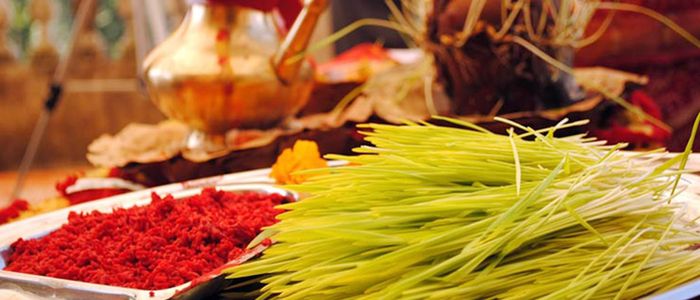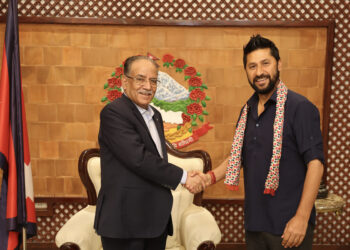KATHMANDU: The “Navaratri Parba,” or nine-night festival of Bada Dashain, Nepal’s most significant Hindu celebration, kicks off today.
The first day, known as “Ghatasthapana,” falls on Aswin Shukla Pratipada, marking the beginning of the bright half of the lunar calendar in the month of Asoj.
On Ghatasthapana, Nepali Hindus perform Vedic rituals, worshiping the Diyo (an oil-fed lamp), Kalas (auspicious jar), and Lord Ganesh.
They also sow maize and barley seeds in a jar filled with soil and cow dung to germinate the auspicious Jamara (barley shoots). Prayers are offered to Durga Bhavani, the goddess of power, as part of the day’s observances.
At Hanumandhoka Dashain Ghar, the germination of the auspicious Jamara is initiated today in accordance with traditional rituals, which often include the sacrifice of animals.
Additionally, prayers are offered to goddesses Mahakali, Mahalaxmi, and Mahasaraswati, marking the start of the Navaratri festival.
The golden barley shoots and the auspicious Tika will be bestowed by parents upon their children and by elders upon their juniors on the tenth day of Bada Dashain, accompanied by blessings for peace, prosperity, and happiness.
This year, the auspicious hour for receiving Tika is set for 11:36 a.m. on October 12.
Throughout the Navaratri, thousands of devotees will visit various shrines dedicated to goddess Durga Bhawani, including Naxal Bhagawati, Shobha Bhagawati, Maitidevi, Guheswori, and others during the early morning hours.
People also recite sacred verses and hymns in honor of Durga Bhawani at temples, shrines, and in their homes during the Dashain period.









Comment